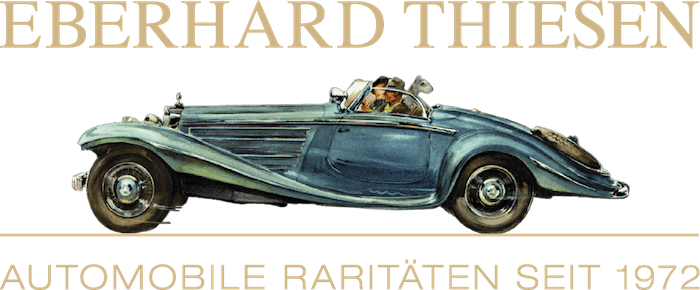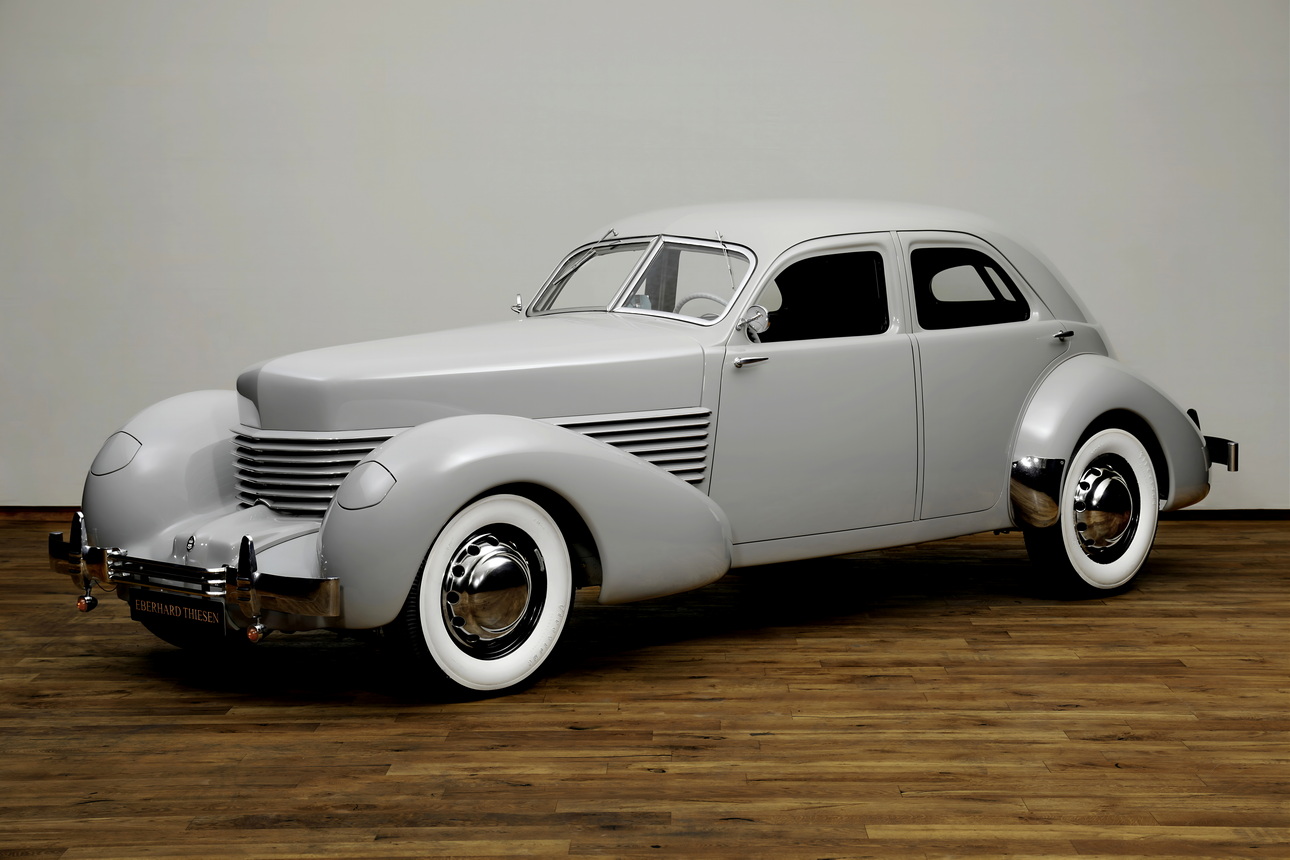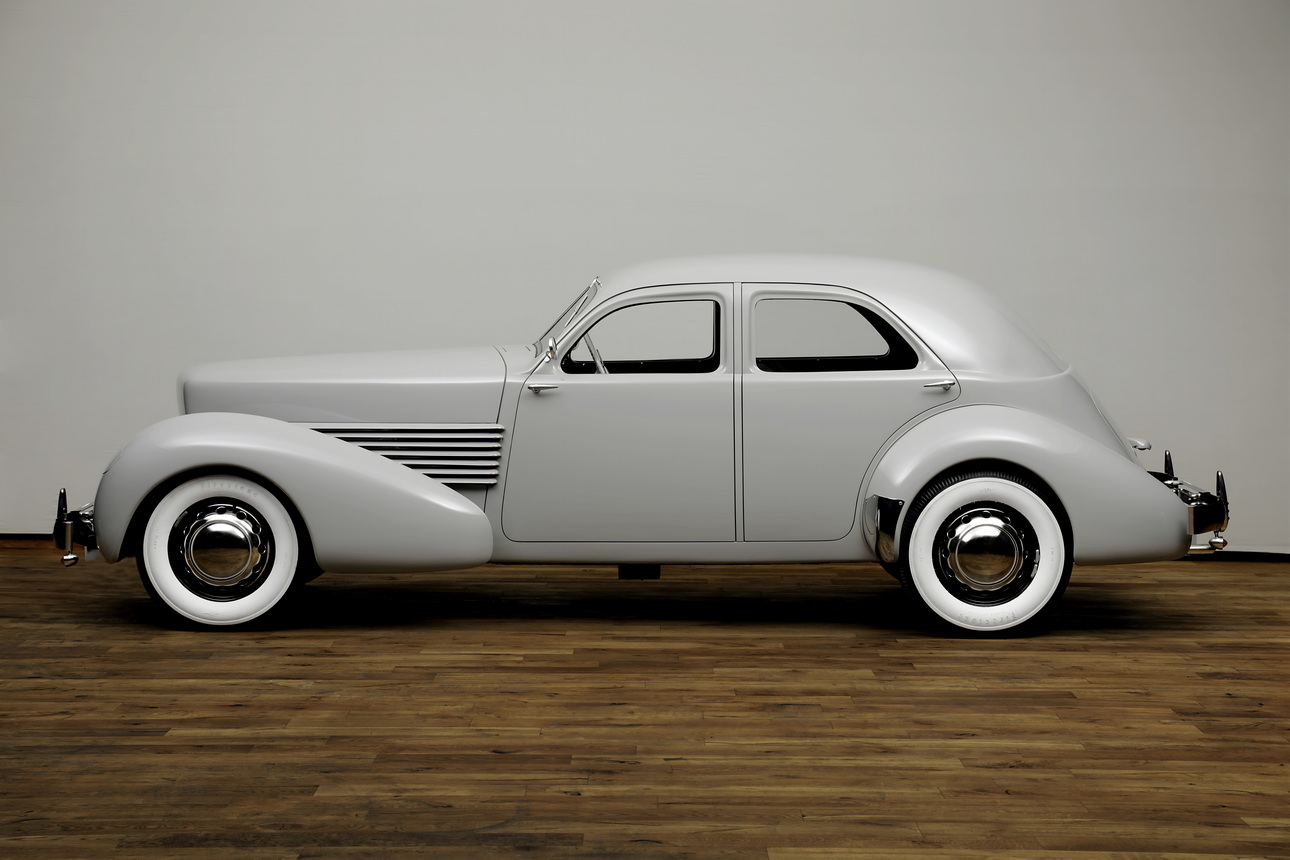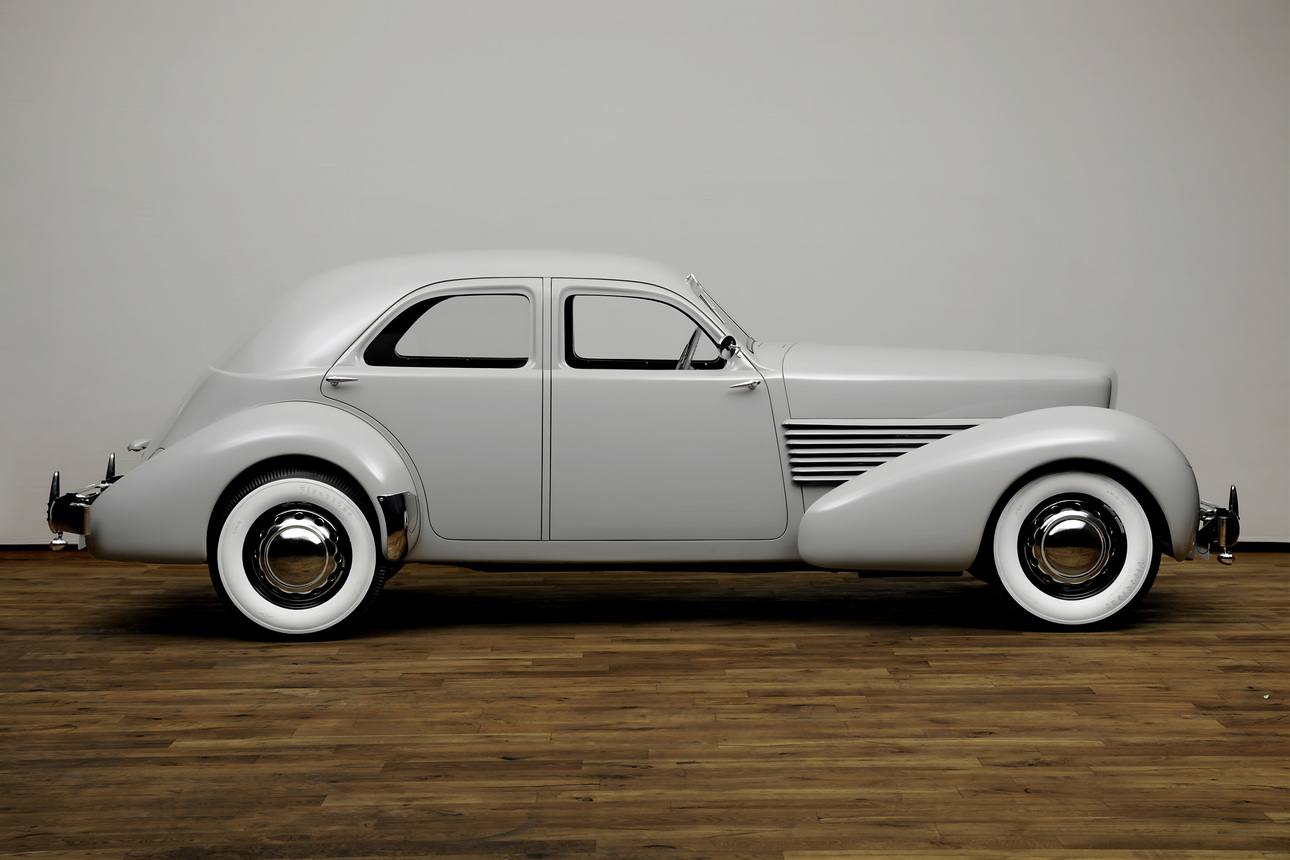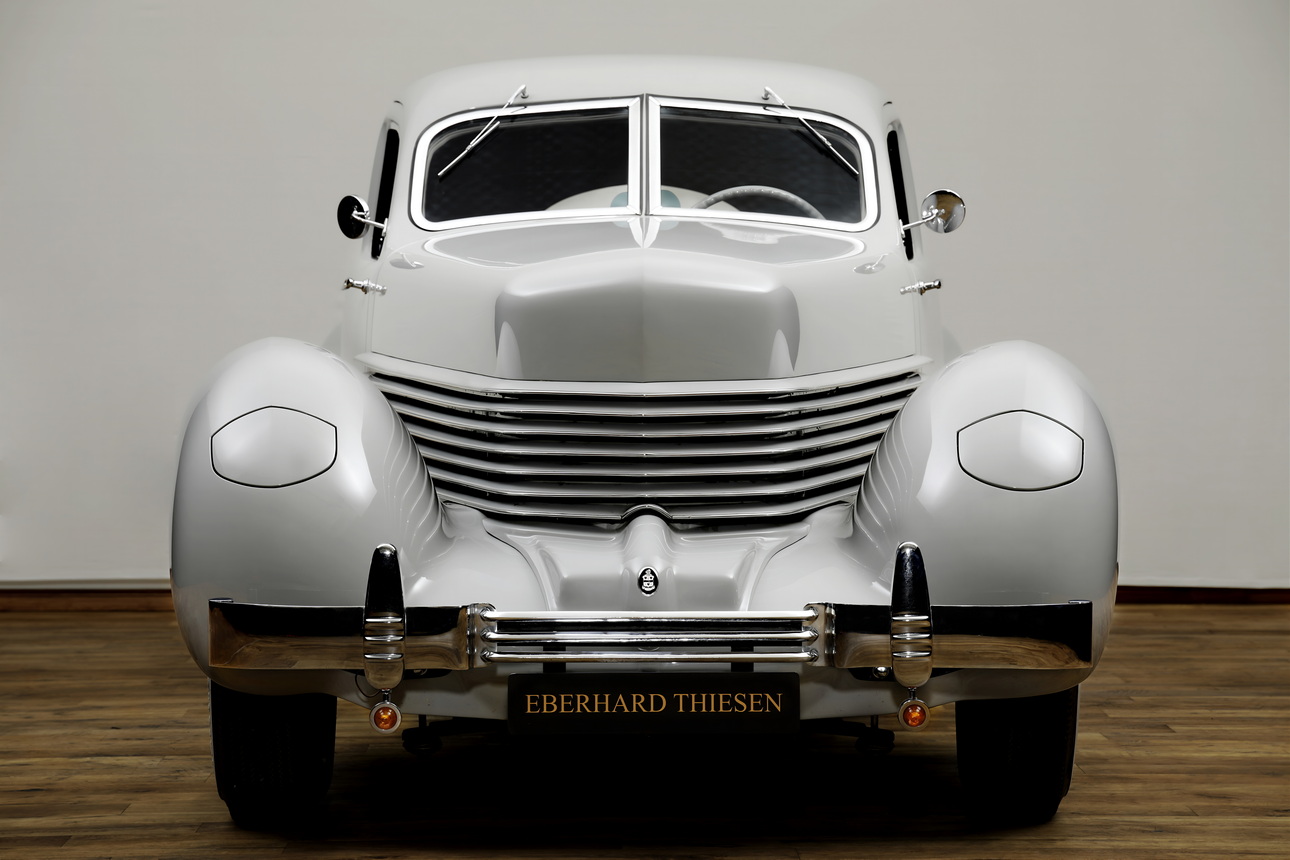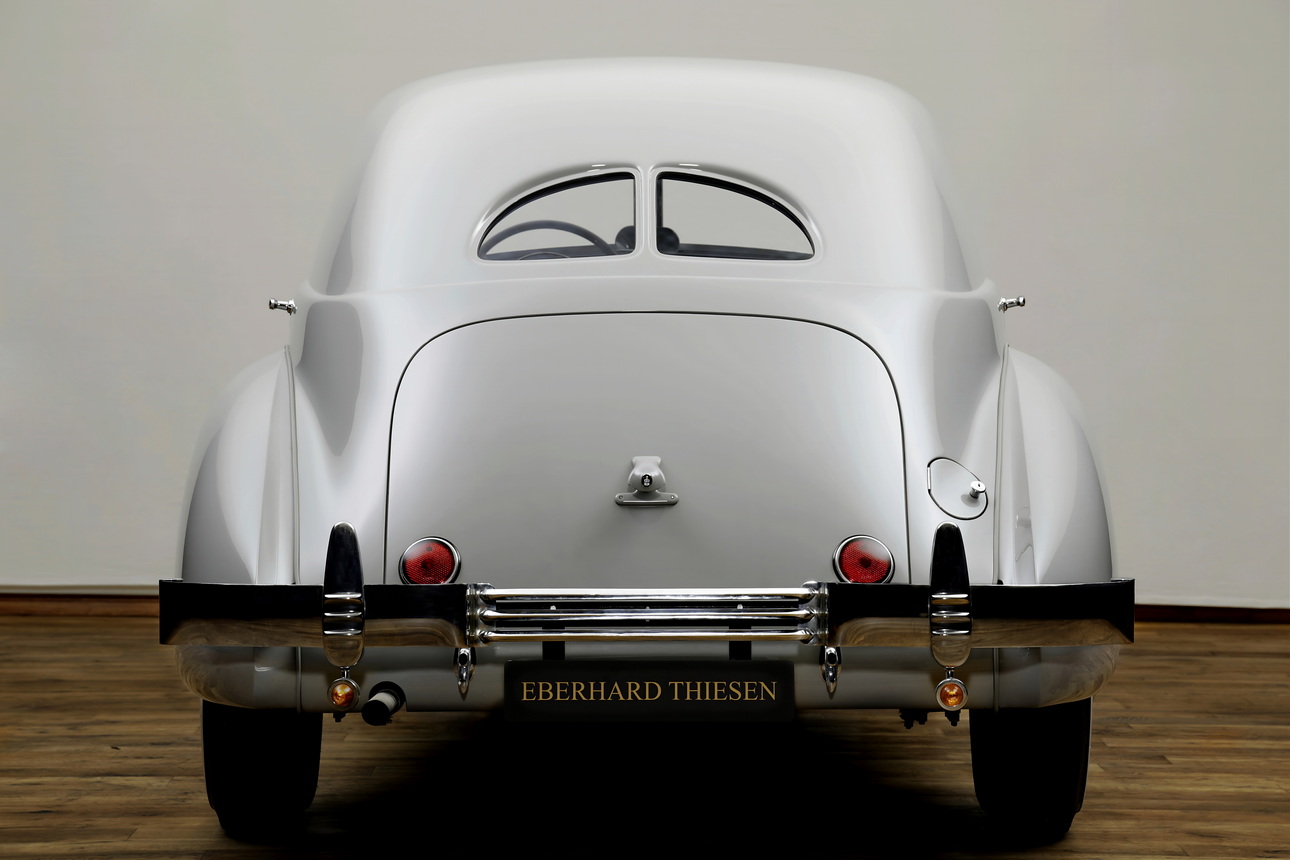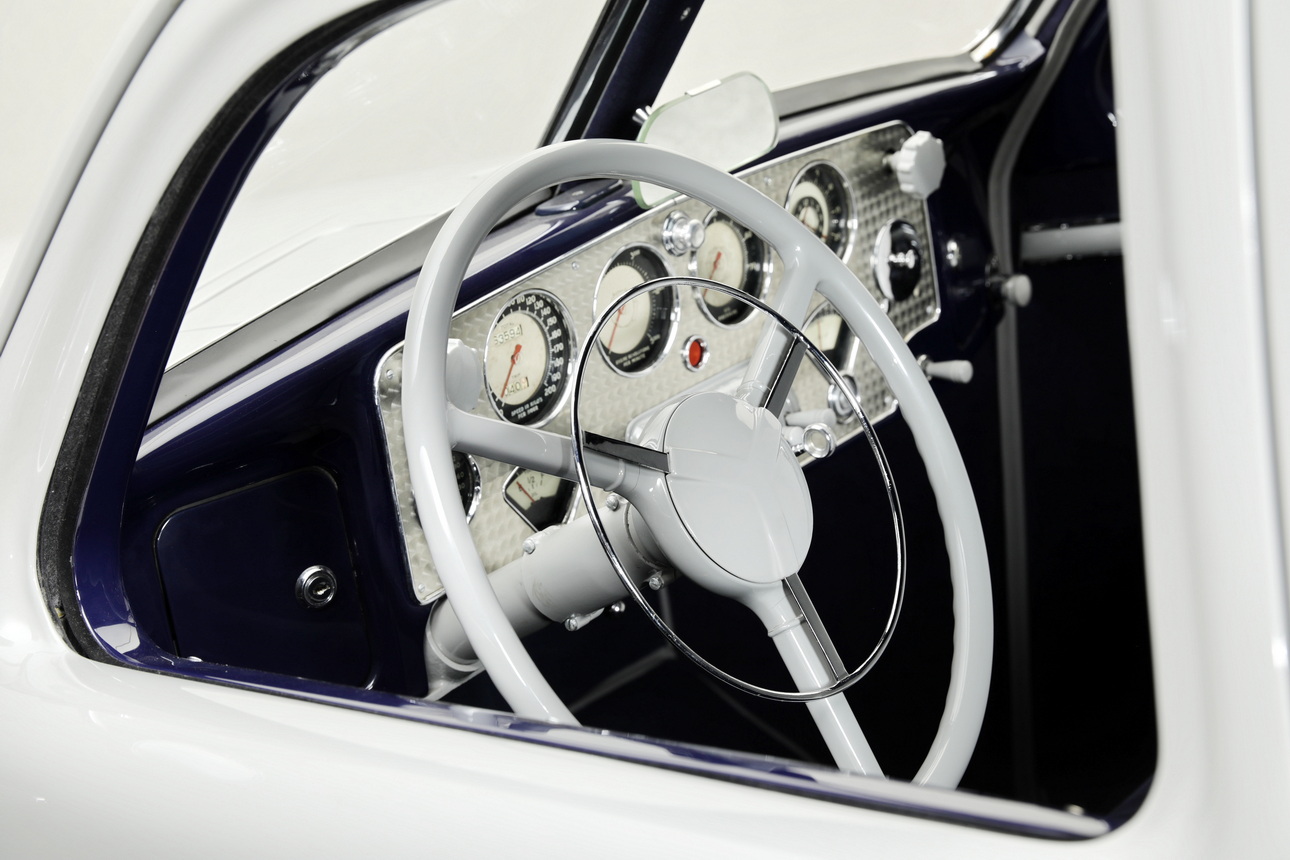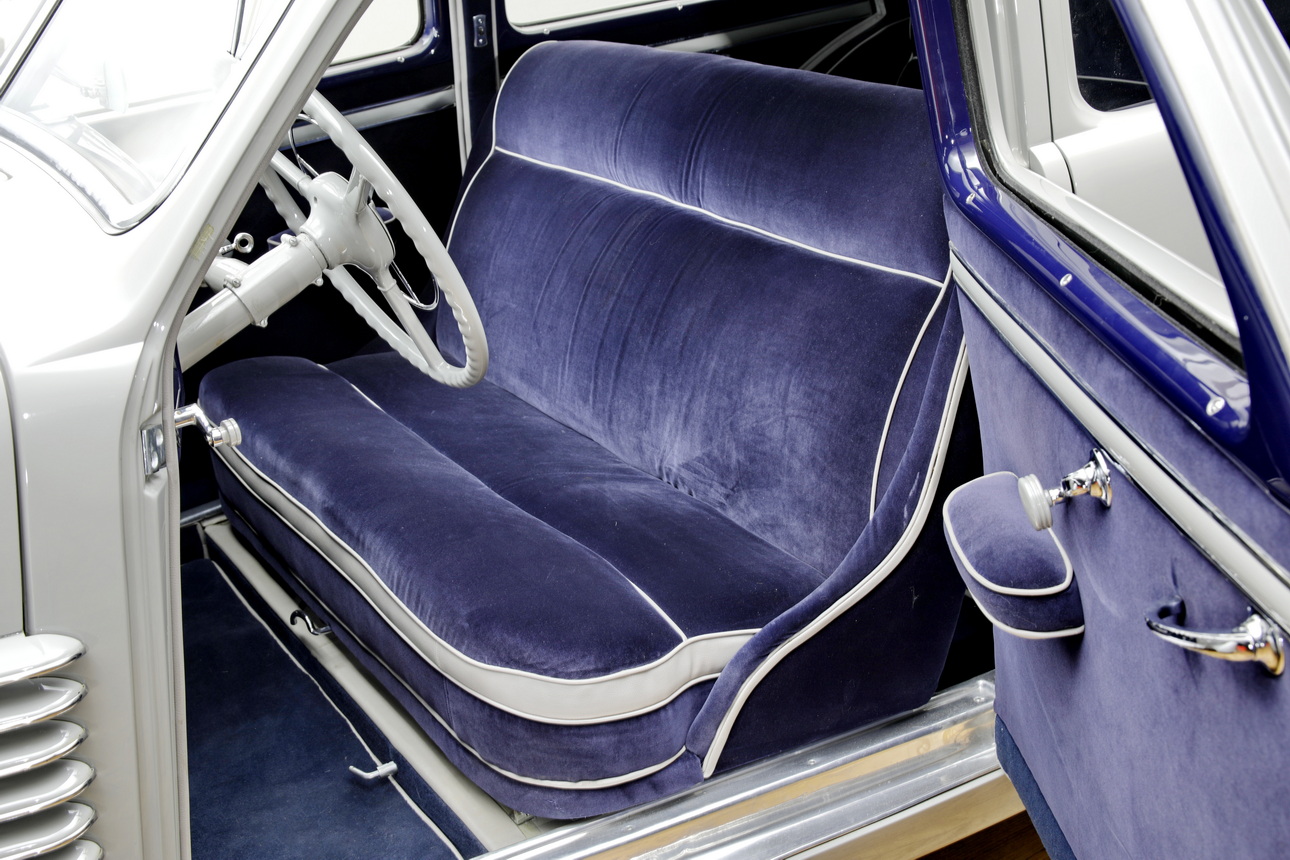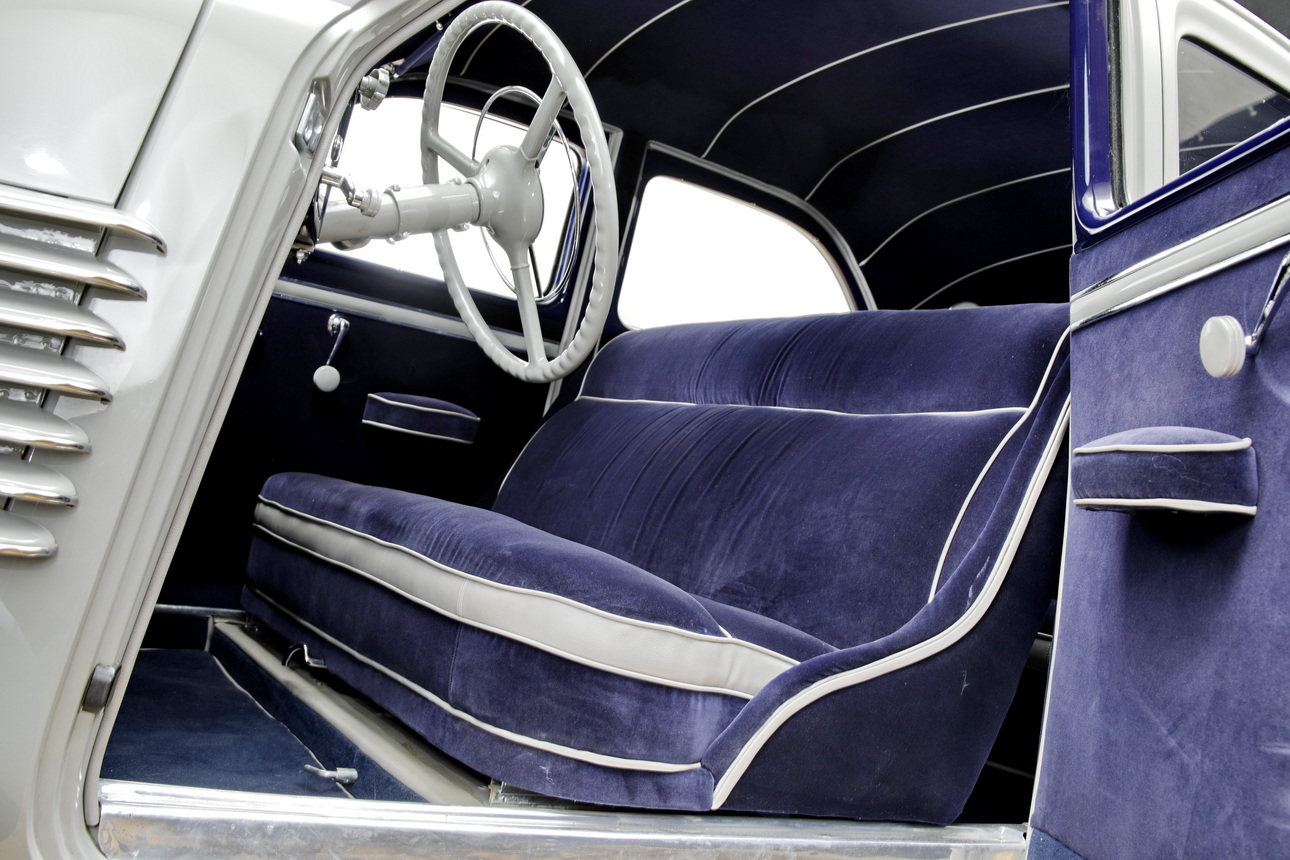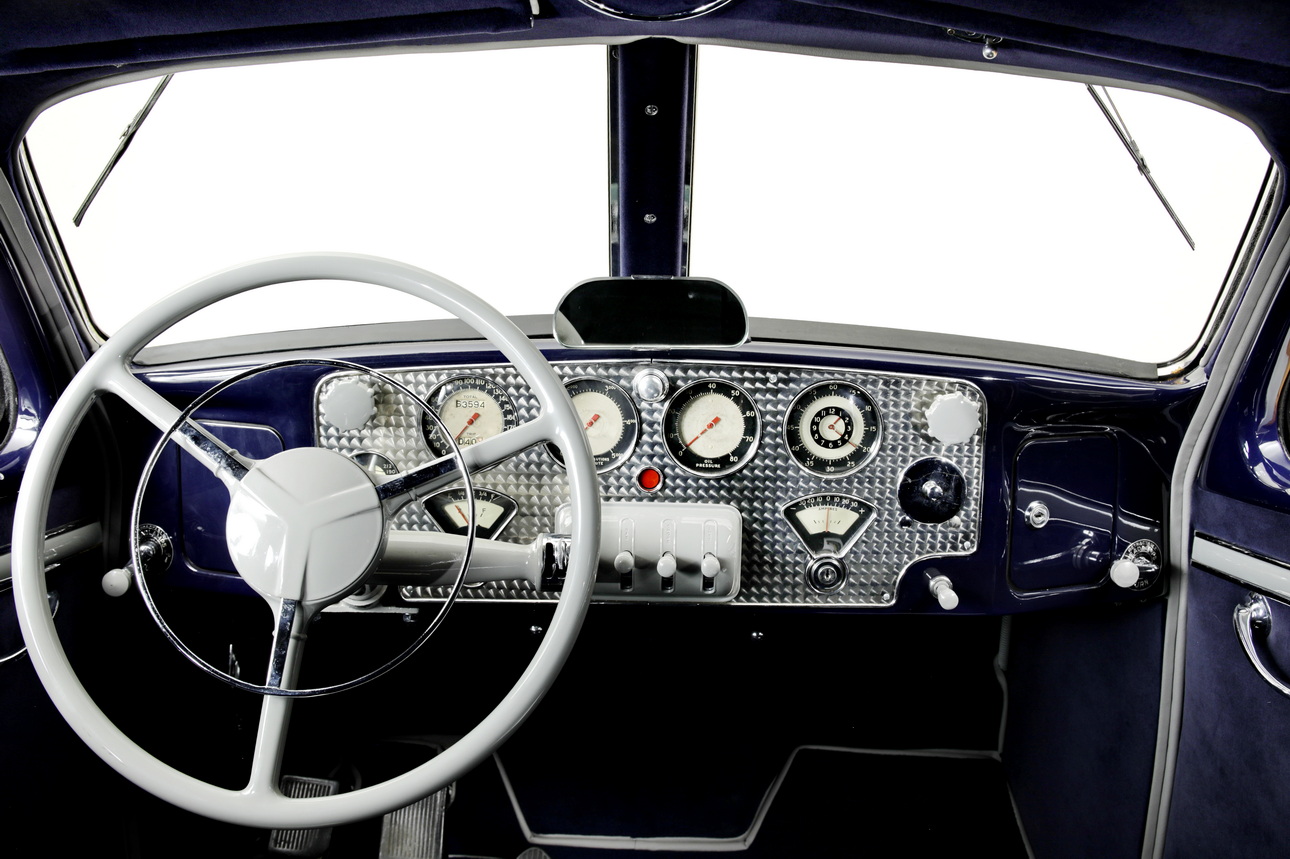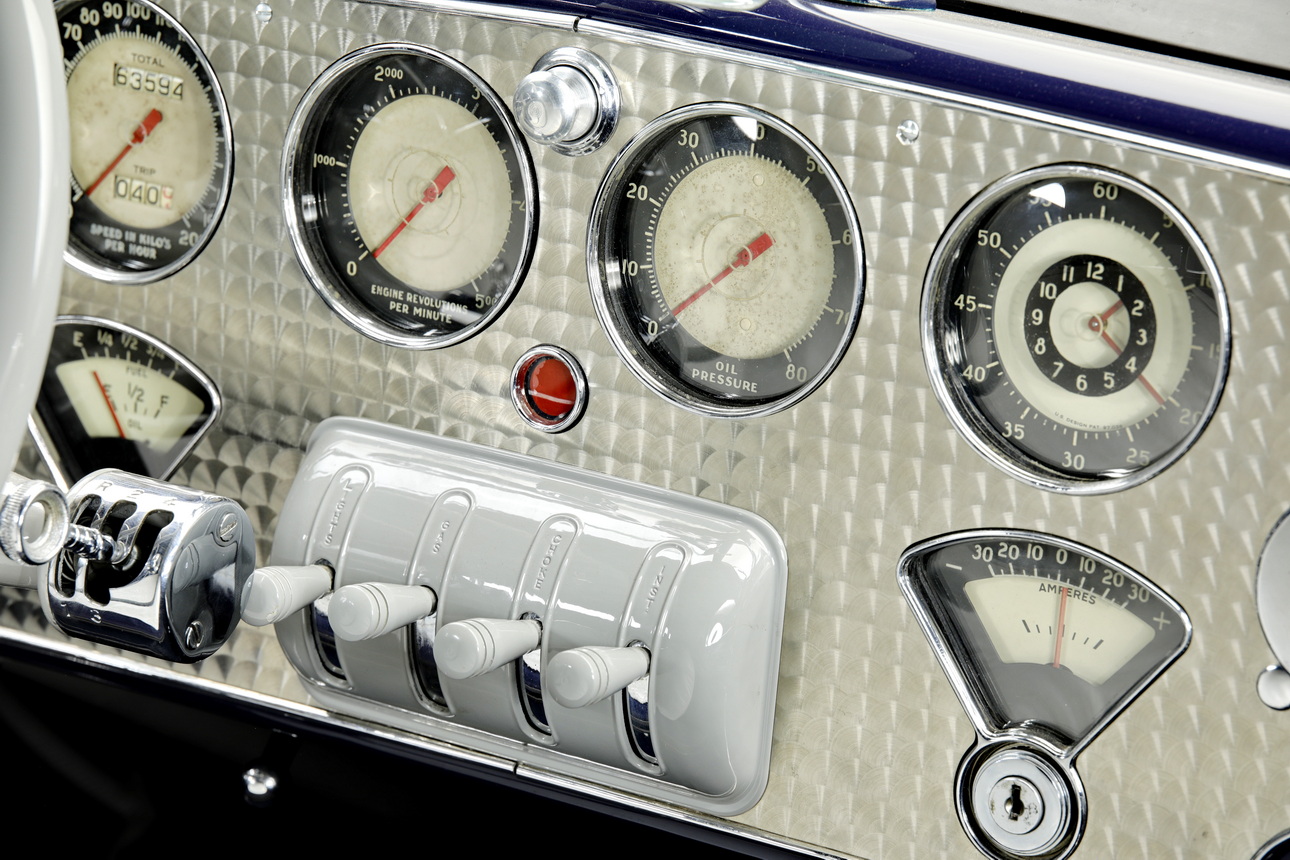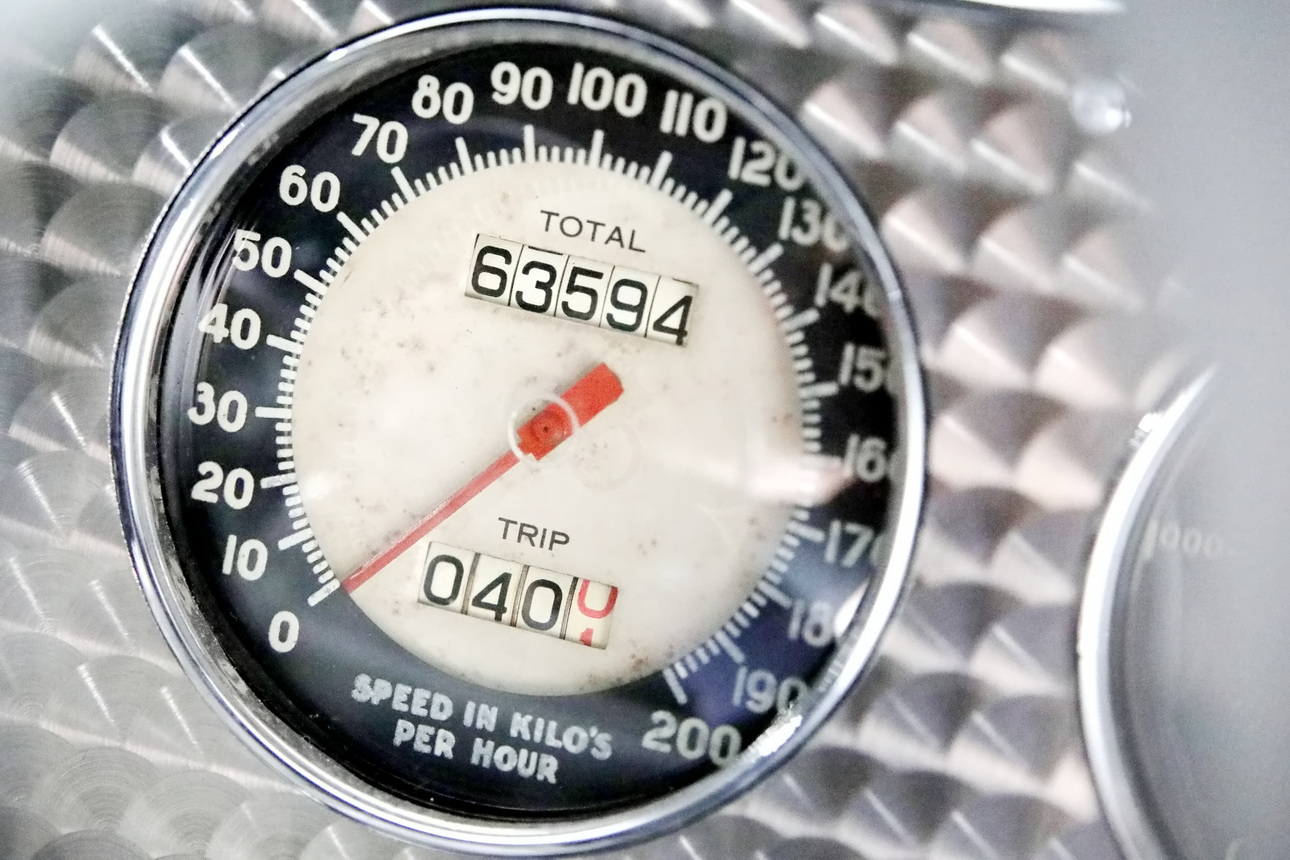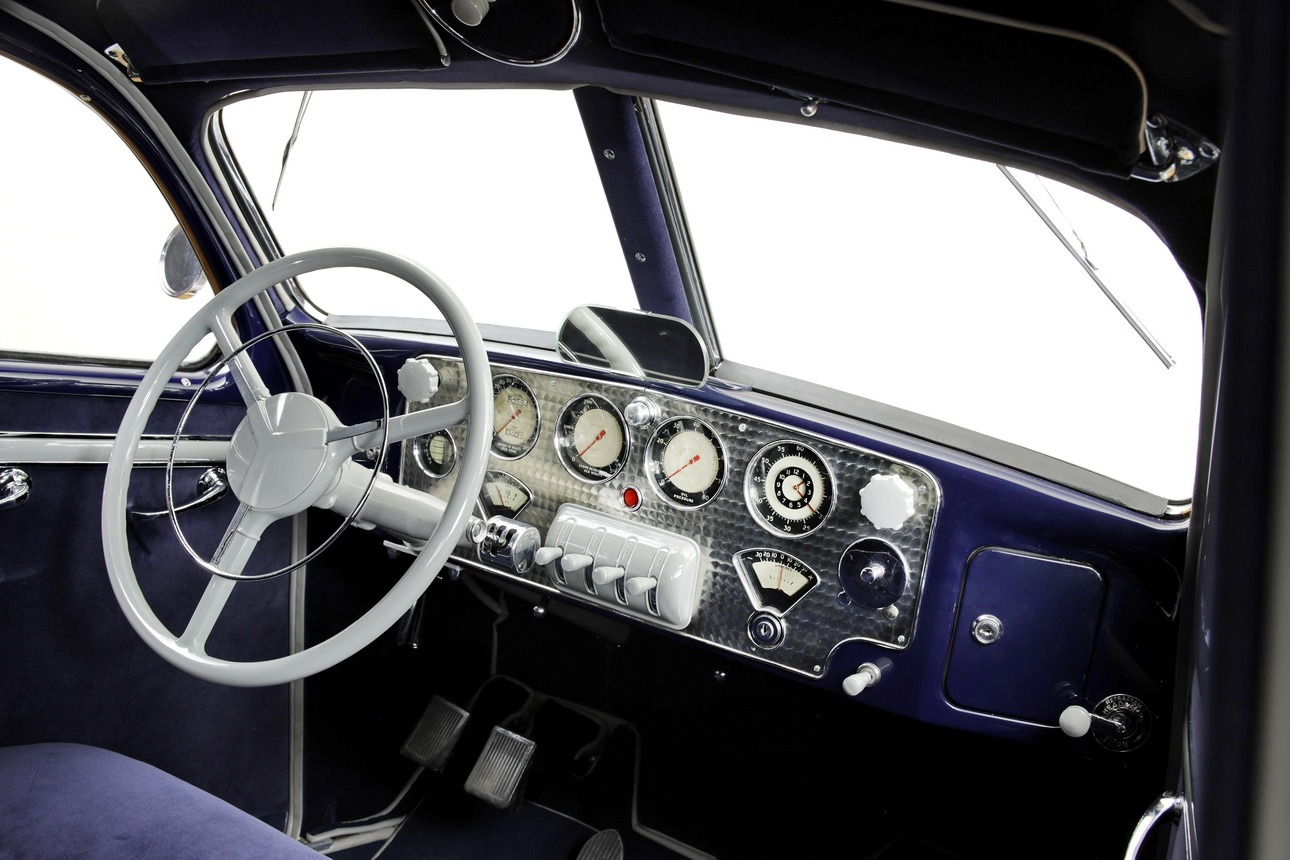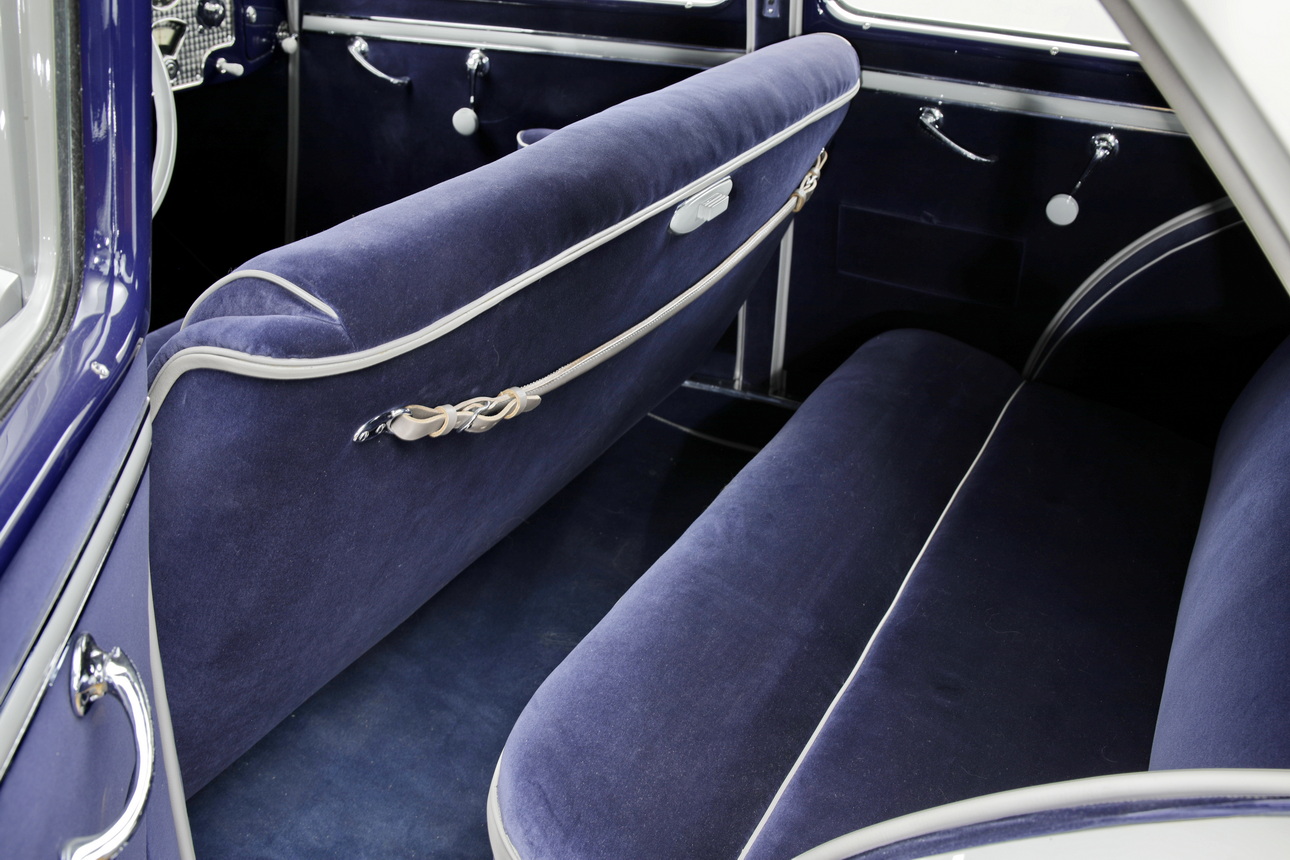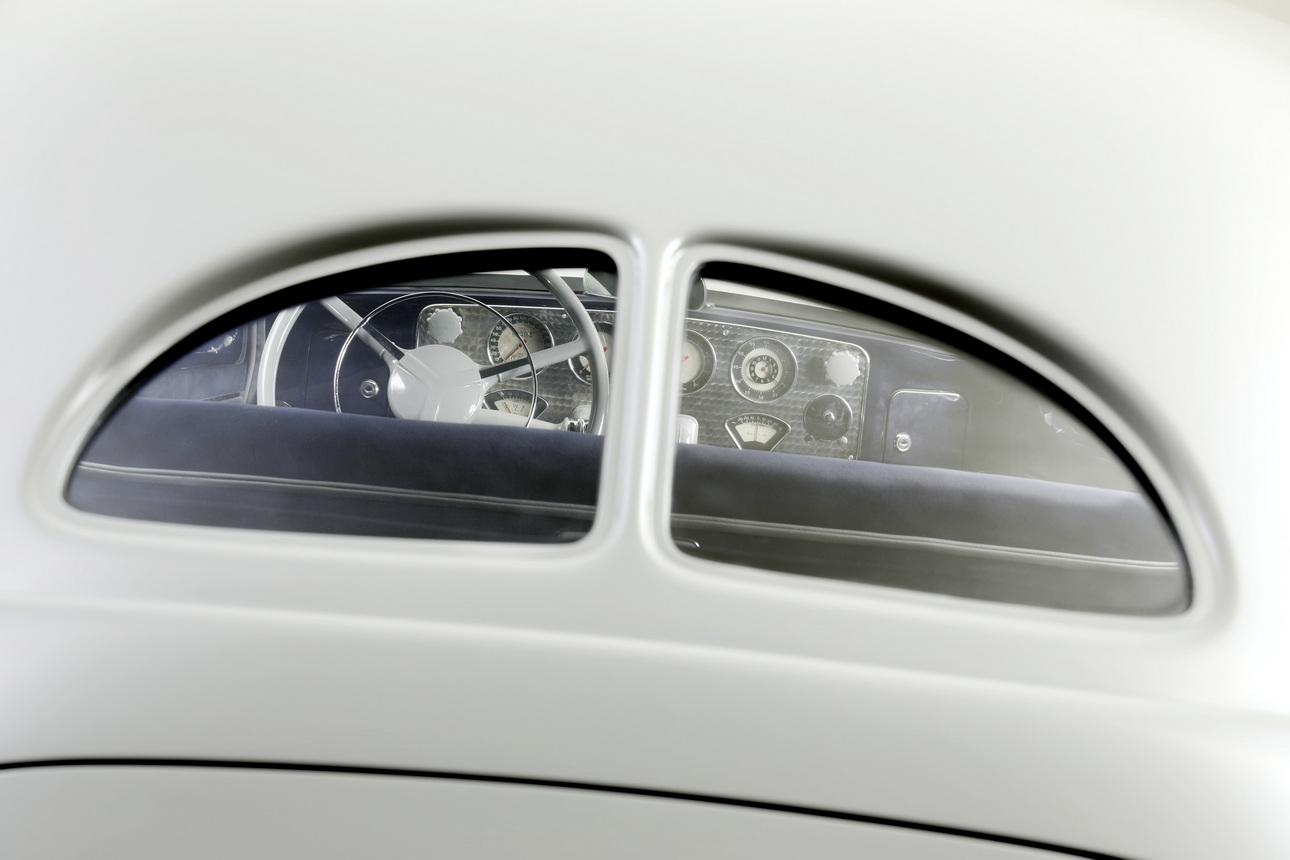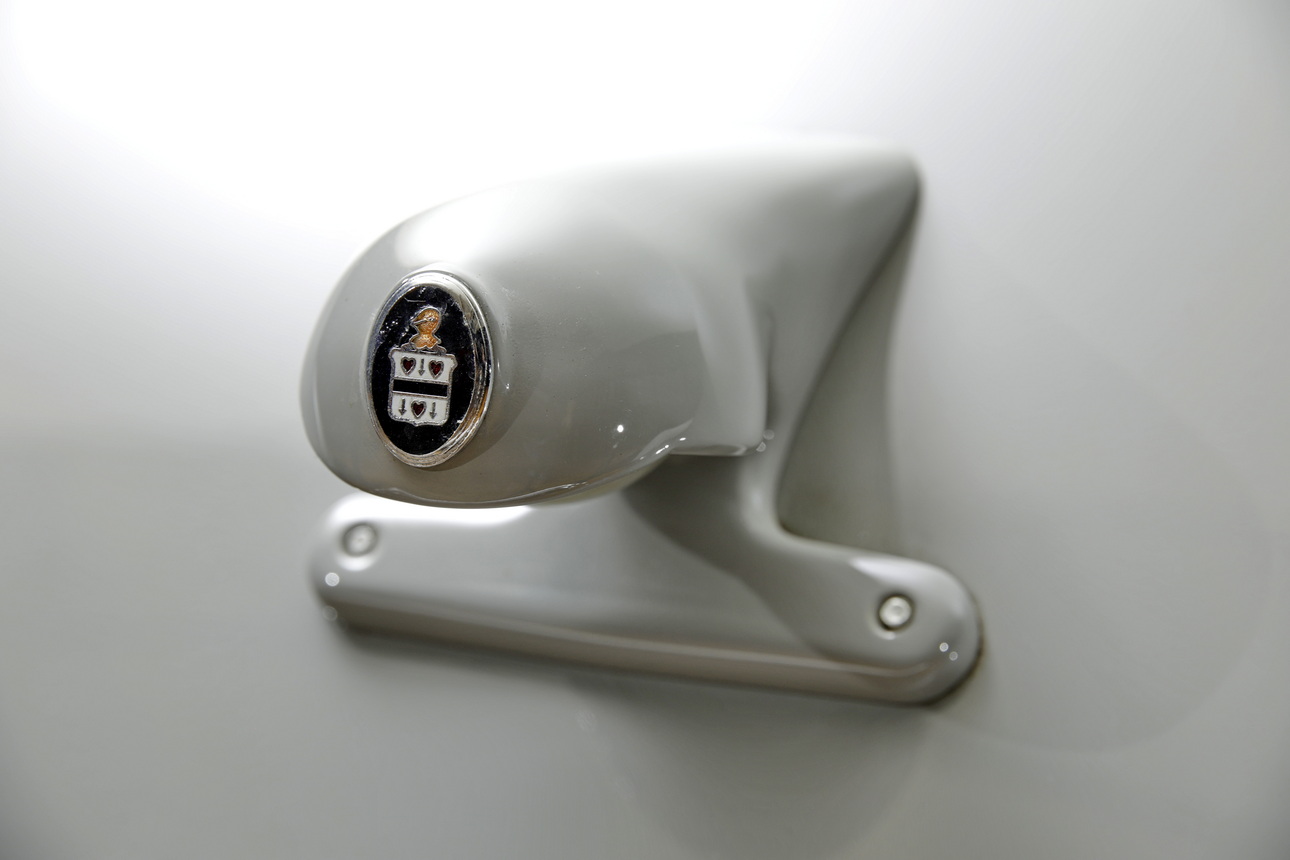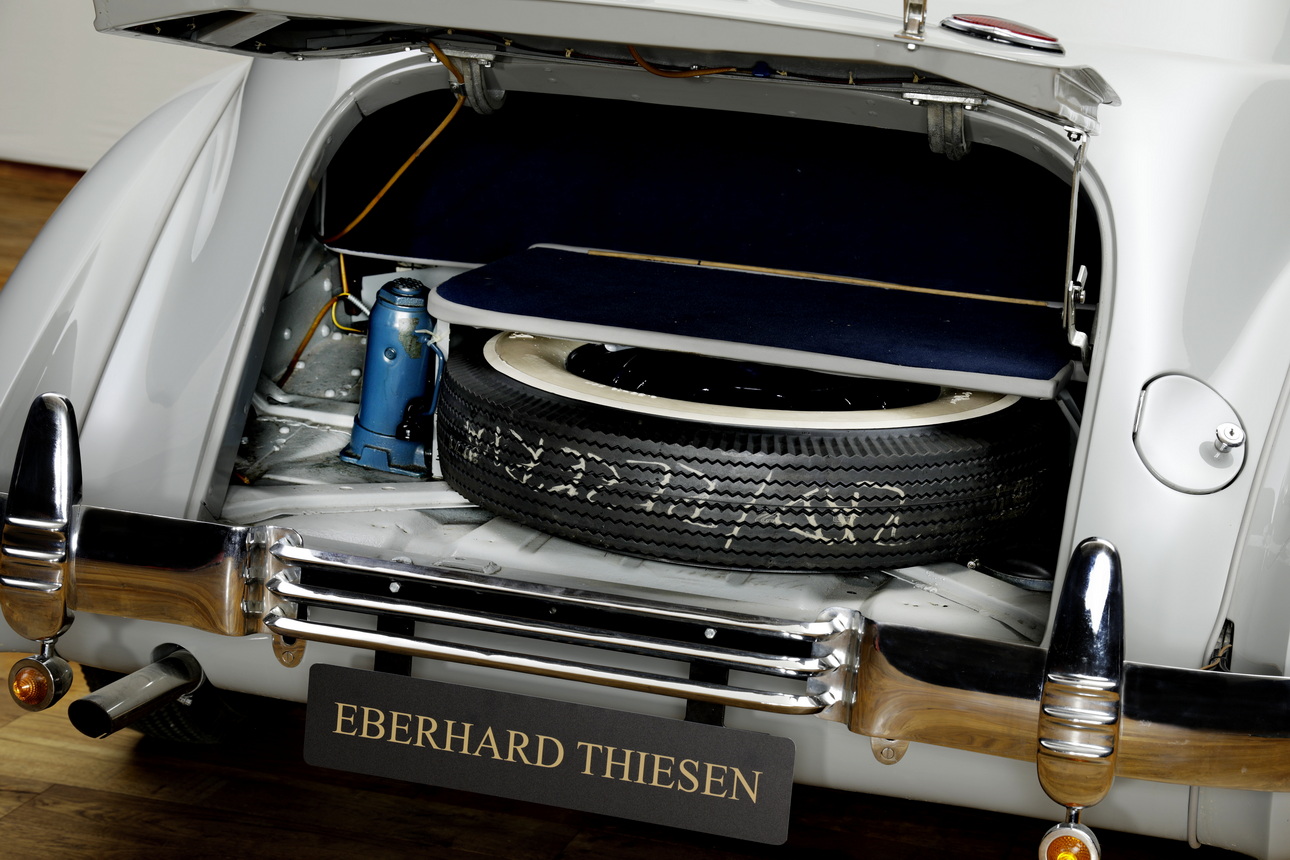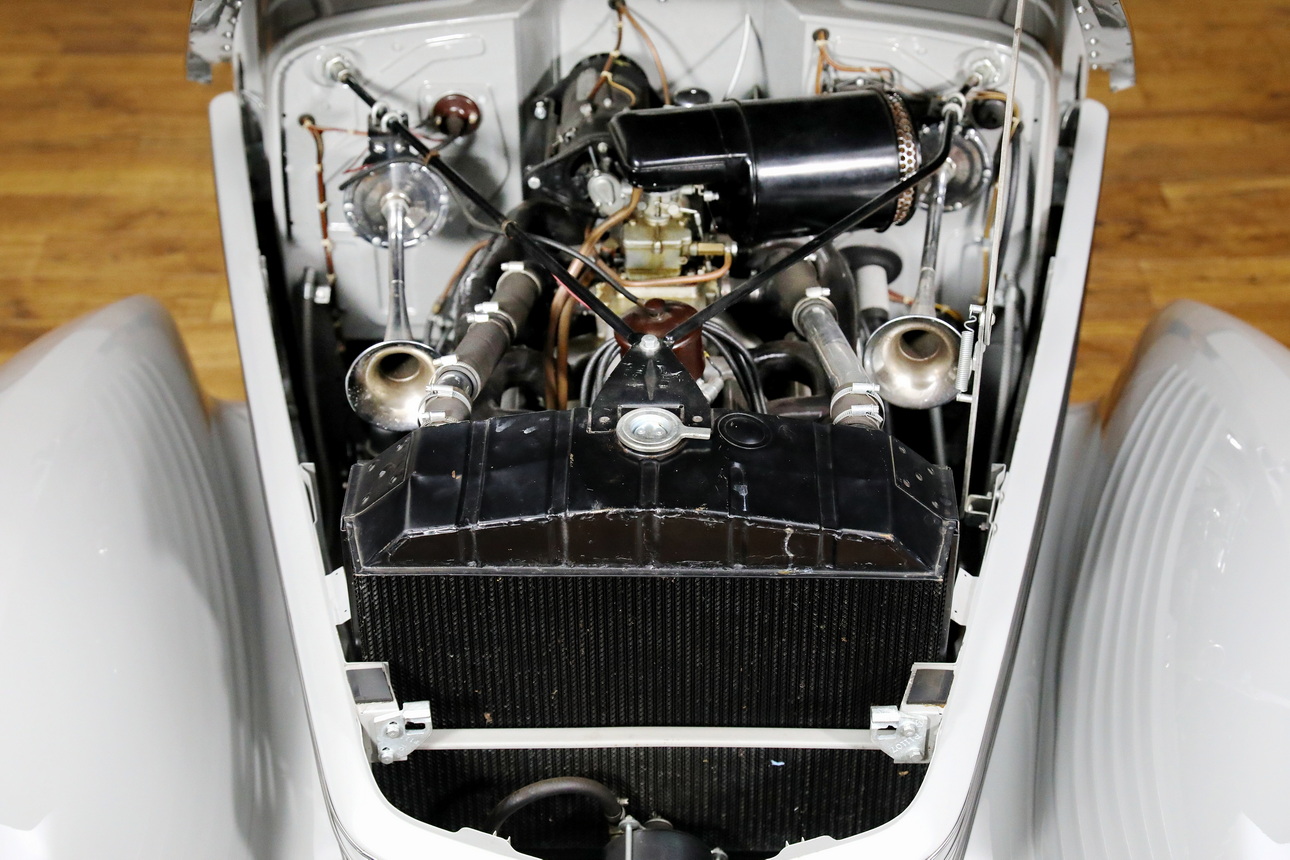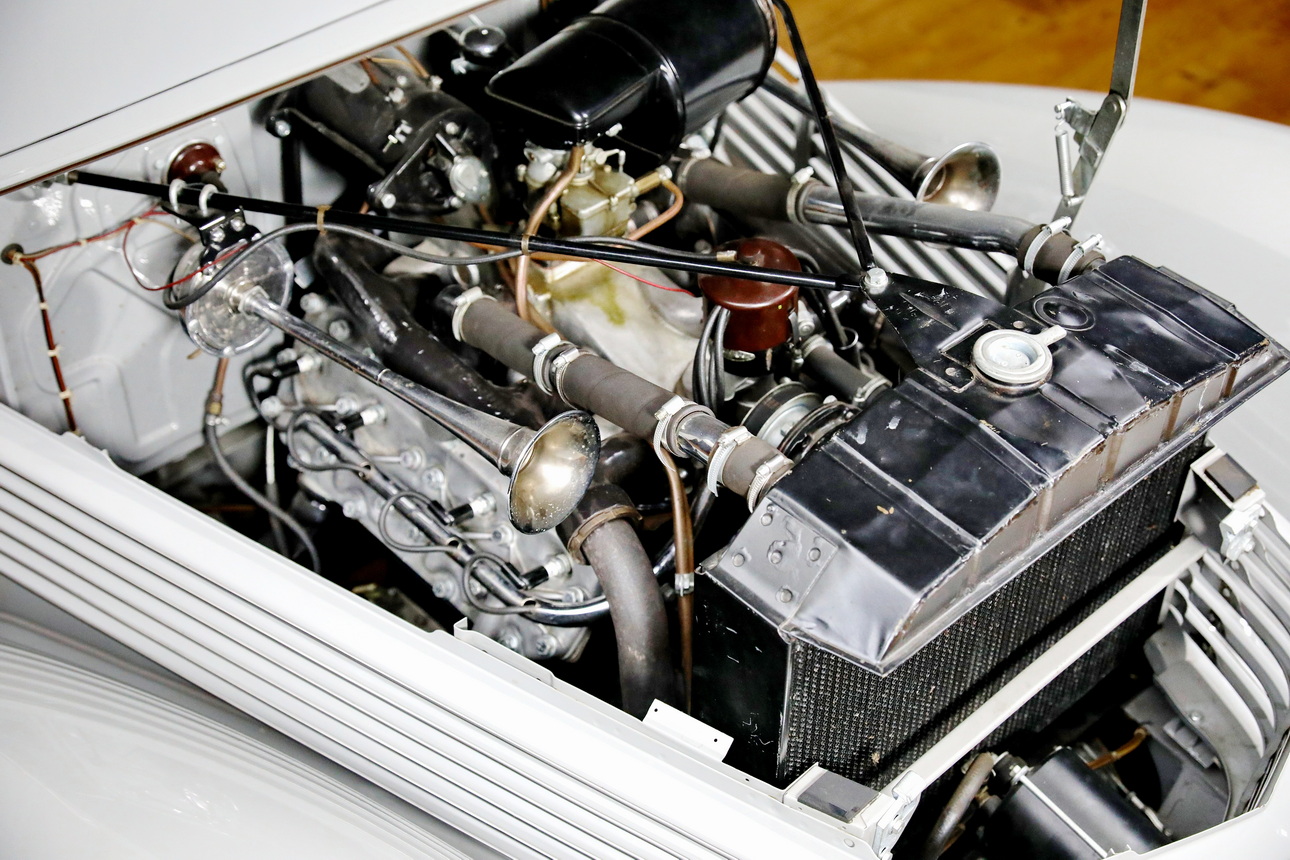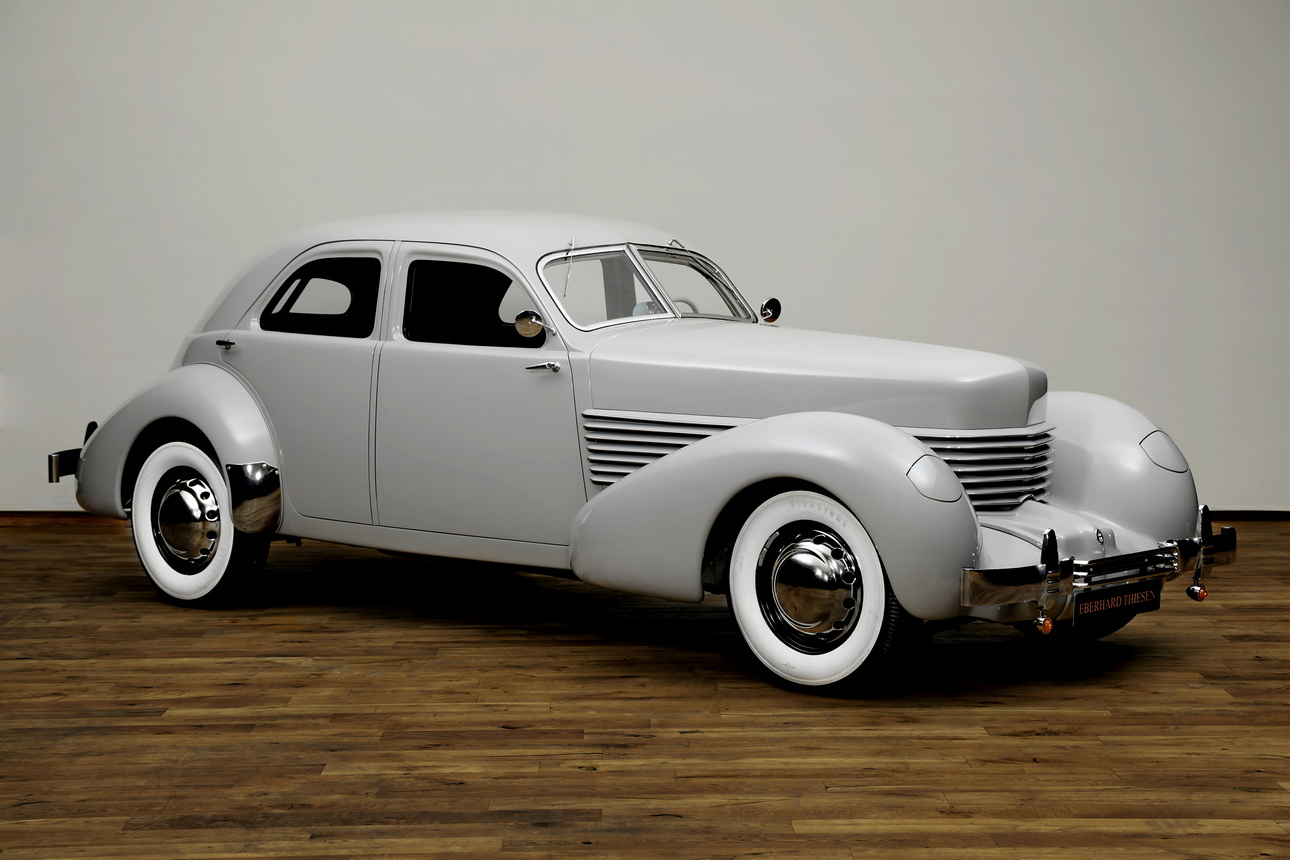Cord 812 Westchester Sedan
Highlights
Data & Facts
This Automobile
The Cord 812, which was only built in the year 1937, is, like its almost identical predecessor the 810, one of the most legendary vehicles in US automotive history of the pre-war era. It impressively embodies a period of technical progress with genuine innovations such as front-wheel drive, independent suspension and a semi-automatic four-speed pre-selector gearbox. Its modern aerodynamic design was also exceptional and pioneering.
This Cord 812 from 1937 made its way to France at some point and, according to available documents, was sold on 7 June 1961 by a Monsieur Lepage for 3,000 French Franc to the prominent Schlumpf brothers in Alsace, who had gathered one of the most important classic car collections in the world over the course of their lives. The car remained there for over 45 years together with several other classic cars in the ‘collection reserve’ – presumably in more or less untouched original condition as the existing photos document.
In 2008, the collection reserve was sold by Fritz Schlumpf's heirs as the ‘Arlette Schlumpf Reserve’. In the course of this sale, the Cord 812 (engine variant without supercharger) came to the Czech Republic, where it was comprehensively restored to its original condition.
The colour scheme is probably the original one: A ‘Cadet Grey’ paint finish available at the time with an interior in dark blue velvet. The decorative, high-quality details of the dashboard have also been lovingly restored. They contrast with the clean design of the bodywork. In top restored condition, the Cord 812 then entered a collection in Germany in 2022. The car is now a rare opportunity to acquire such an impressive Cord sedan from the 810/812 series. The innovative spirit and influence of the Cord brand can still be felt in this example today. Later many other brands incorporated design elements and technical features of the Cord 812 into their vehicles.
Model History
The Cord Corporation was founded in 1929 by Errett Lobban Cord, an entrepreneur and engineer who worked in the automotive and aviation industries. The holding company also included the automobile brands Auburn and Duesenberg, the engine manufacturer Lycoming and the new Cord brand. Cord was known for his innovative vehicle developments, and the 810/812 series was one of the most outstanding results of his vision.
In 1935, the Cord 810 series was presented. With its front-wheel drive, independent suspension on the front axle, modern body design and technical features, it surpassed many other vehicles and gave the model a pioneering position. The front-wheel drive, which had already been used for the first time in a production vehicle in the predecessor model L-29, ensured exceptional handling and high stability. The front-wheel drive also enabled a lower entry height, which meant that the model did not require side running boards. From 1937, the 810 became the 812, although the vehicle basically remained the same. The main changes were better workmanship, a more reliable gearbox and two further body variants as a saloon with an extended wheelbase.
The engine was always a short V8 from the company's own Lycoming brand with a capacity of 4.7 litres and 125 hp. Just one year later (1936), there was an optional supercharger with an output of around 170 hp, initially called the 810 S and then the 812 S from 1937. Another innovation was the semi-automatic electric four-speed pre-selector gearbox. There is only a small shift gate on the dashboard in which the desired gear is (pre)selected and engaged when the clutch in the transmission is depressed. The fact that this process was carried out electrically was a major gain in comfort.
The modern bodywork by US designer Gordon Buehrig was pioneering and attractive. The aerodynamic design with its early streamlined shape also borrowed design cues from the Art Deco era of the time. The front with radiator and bonnet was particularly striking. The radiator grille with its horizontal ribs running along the side of the engine panelling up to the front doors gave the vehicle a progressive yet elegant appearance. The front-opening ‘Coffin Nose’ bonnet was also unconventional for the time compared to the two-piece bonnets. The design also dispensed with almost every form of ornamentation and chrome plating, which was common in high-priced, luxury brands and models at the time. The folding headlights, which were installed in the Cord 810 for the first time in a production vehicle, also contributed to the modern look. Cord used the retractable landing lights from the Stinson Aircraft Company, which also belonged to the Cord holding company. Concealed door hinges and a covered fuel filler cap were further details of simplicity.
Even in its day, the 810/812 series remained exclusive. Only 2,972 vehicles were manufactured until August 1937, when production was discontinued for financial reasons. Many of the above-mentioned special features of the Cord 810/812 were revolutionary in the mid-1930s and influenced later vehicle developments or even became standard. Many brands adopted design elements and technical features in their own models.
This Automobile
The Cord 812, which was only built in the year 1937, is, like its almost identical predecessor the 810, one of the most legendary vehicles in US automotive history of the pre-war era. It impressively embodies a period of technical progress with genuine innovations such as front-wheel drive, independent suspension and a semi-automatic four-speed pre-selector gearbox. Its modern aerodynamic design was also exceptional and pioneering.
This Cord 812 from 1937 made its way to France at some point and, according to available documents, was sold on 7 June 1961 by a Monsieur Lepage for 3,000 French Franc to the prominent Schlumpf brothers in Alsace, who had gathered one of the most important classic car collections in the world over the course of their lives. The car remained there for over 45 years together with several other classic cars in the ‘collection reserve’ – presumably in more or less untouched original condition as the existing photos document. In 2008, the collection reserve was sold by Fritz Schlumpf's heirs as the ‘Arlette Schlumpf Reserve’. In the course of this sale, the Cord 812 (engine variant without supercharger) came to the Czech Republic, where it was comprehensively restored to its original condition.
The colour scheme is probably the original one: A ‘Cadet Grey’ paint finish available at the time with an interior in dark blue velvet. The decorative, high-quality details of the dashboard have also been lovingly restored. They contrast with the clean design of the bodywork. In top restored condition, the Cord 812 then entered a collection in Germany in 2022. The car is now a rare opportunity to acquire such an impressive Cord sedan from the 810/812 series. The innovative spirit and influence of the Cord brand can still be felt in this example today. Later many other brands incorporated design elements and technical features of the Cord 812 into their vehicles.
Model History
The Cord Corporation was founded in 1929 by Errett Lobban Cord, an entrepreneur and engineer who worked in the automotive and aviation industries. The holding company also included the automobile brands Auburn and Duesenberg, the engine manufacturer Lycoming and the new Cord brand. Cord was known for his innovative vehicle developments, and the 810/812 series was one of the most outstanding results of his vision.
In 1935, the Cord 810 series was presented. With its front-wheel drive, independent suspension on the front axle, modern body design and technical features, it surpassed many other vehicles and gave the model a pioneering position. The front-wheel drive, which had already been used for the first time in a production vehicle in the predecessor model L-29, ensured exceptional handling and high stability. The front-wheel drive also enabled a lower entry height, which meant that the model did not require side running boards. From 1937, the 810 became the 812, although the vehicle basically remained the same. The main changes were better workmanship, a more reliable gearbox and two further body variants as a saloon with an extended wheelbase.
The engine was always a short V8 from the company's own Lycoming brand with a capacity of 4.7 litres and 125 hp. Just one year later (1936), there was an optional supercharger with an output of around 170 hp, initially called the 810 S and then the 812 S from 1937. Another innovation was the semi-automatic electric four-speed pre-selector gearbox. There is only a small shift gate on the dashboard in which the desired gear is (pre)selected and engaged when the clutch in the transmission is depressed. The fact that this process was carried out electrically was a major gain in comfort.
The modern bodywork by US designer Gordon Buehrig was pioneering and attractive. The aerodynamic design with its early streamlined shape also borrowed design cues from the Art Deco era of the time. The front with radiator and bonnet was particularly striking. The radiator grille with its horizontal ribs running along the side of the engine panelling up to the front doors gave the vehicle a progressive yet elegant appearance. The front-opening ‘Coffin Nose’ bonnet was also unconventional for the time compared to the two-piece bonnets. The design also dispensed with almost every form of ornamentation and chrome plating, which was common in high-priced, luxury brands and models at the time. The folding headlights, which were installed in the Cord 810 for the first time in a production vehicle, also contributed to the modern look. Cord used the retractable landing lights from the Stinson Aircraft Company, which also belonged to the Cord holding company. Concealed door hinges and a covered fuel filler cap were further details of simplicity.
Even in its day, the 810/812 series remained exclusive. Only 2,972 vehicles were manufactured until August 1937, when production was discontinued for financial reasons. Many of the above-mentioned special features of the Cord 810/812 were revolutionary in the mid-1930s and influenced later vehicle developments or even became standard. Many brands adopted design elements and technical features in their own models.
